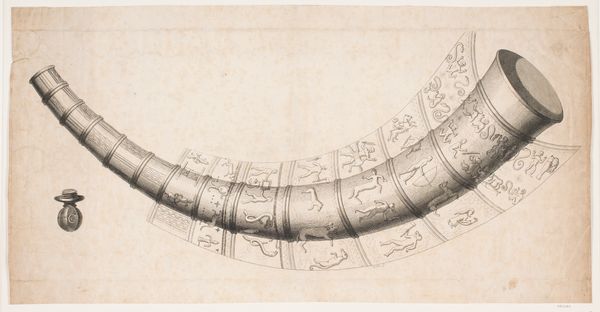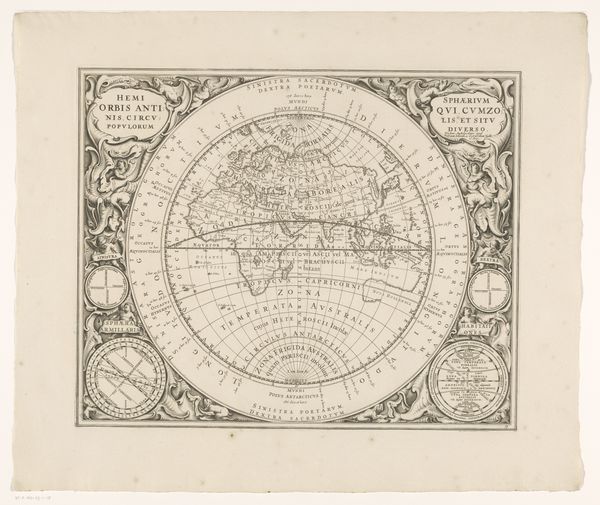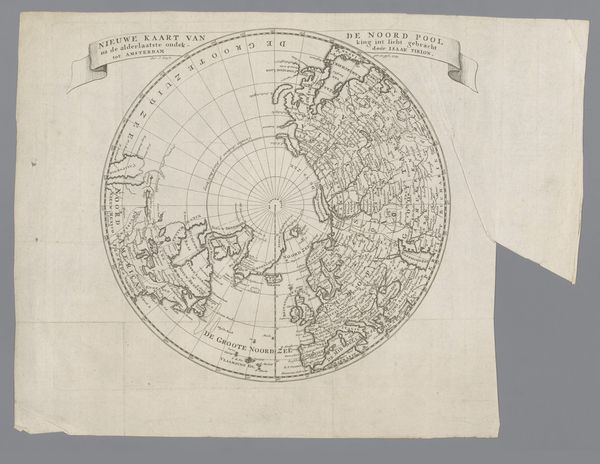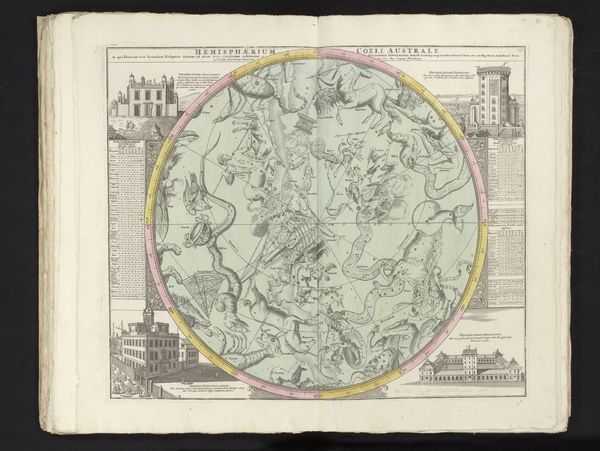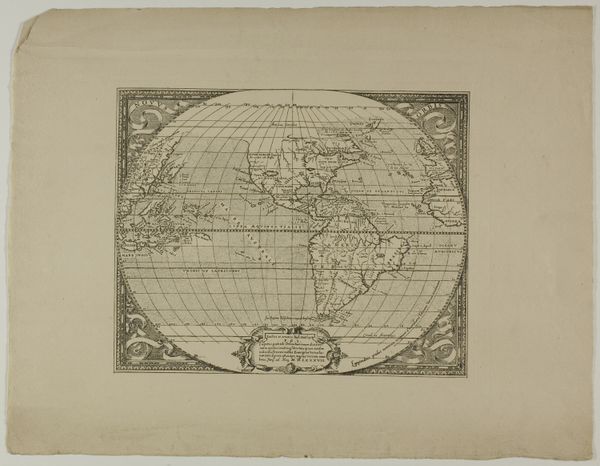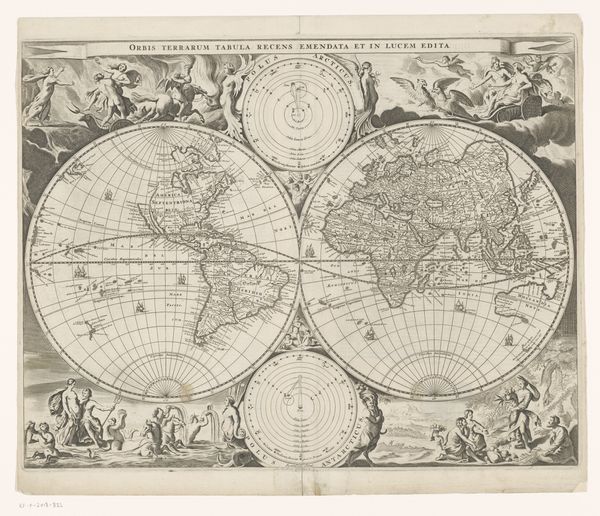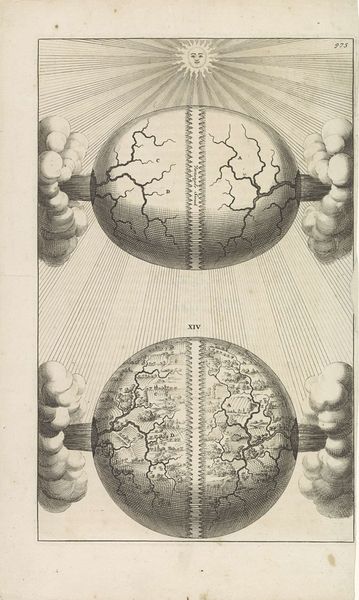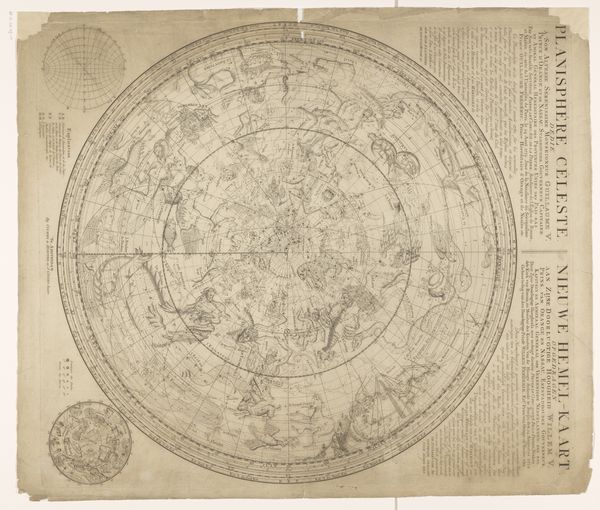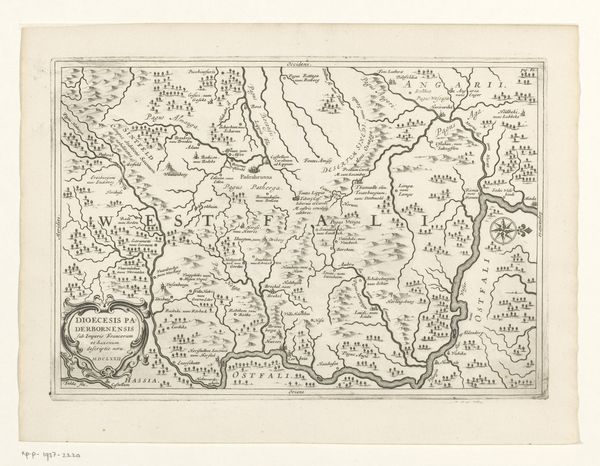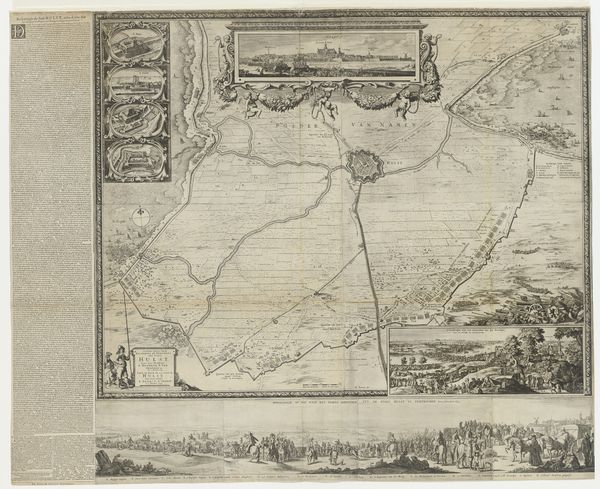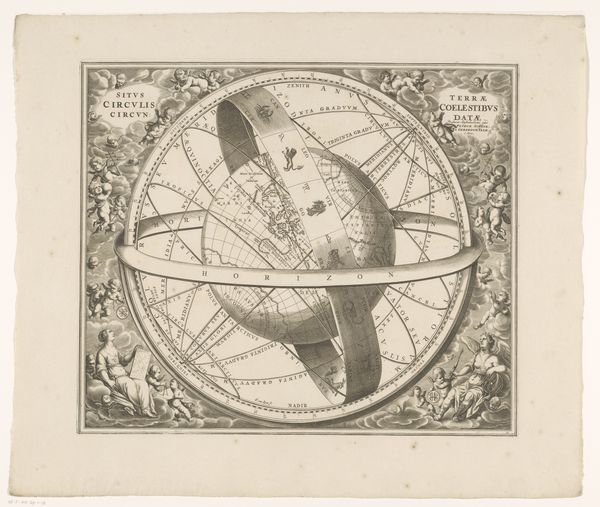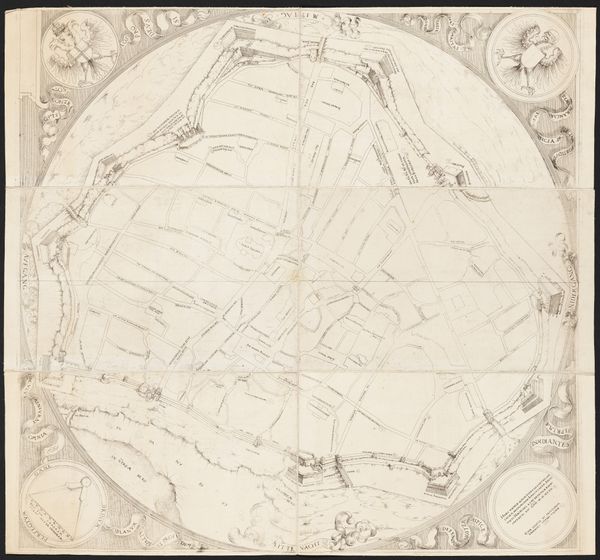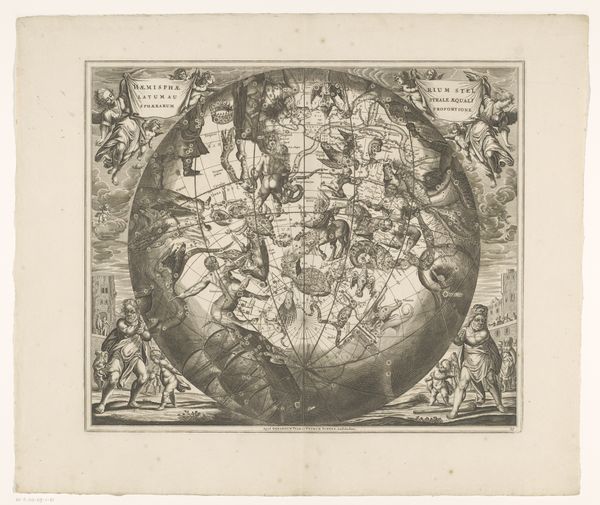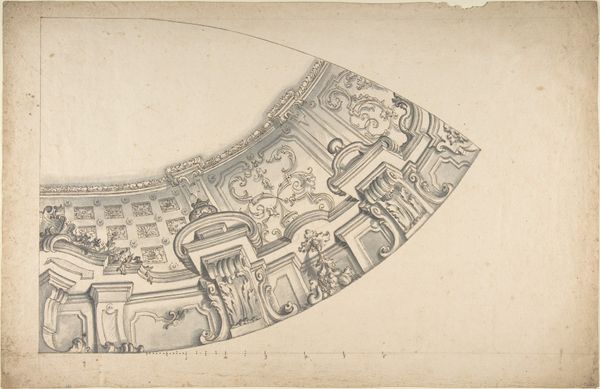
drawing, print, etching, engraving
#
drawing
#
neoclassicism
# print
#
etching
#
old engraving style
#
geometric
#
ancient-mediterranean
#
history-painting
#
engraving
#
calligraphy
Dimensions: 272 mm (height) x 555 mm (width) (bladmaal)
Curator: Let’s delve into this depiction of the Guldhornene, or Golden Horns, dating back to 1805. This rendition is the work of Gerhard Ludvig Lahde, rendered meticulously through etching and engraving. Editor: It has an ethereal, almost ghostly quality. The lines are so fine, and the shading is delicate. It gives the impression of a dream or a memory rather than cold, hard metal. Curator: That ghostly feel speaks to a crucial element: Lahde created this image *after* the original horns were stolen in 1802 and melted down. It is thus, an exercise in cultural and historical recovery, an attempt to preserve a significant artifact. And we have to ask: Who gets to write and rewrite history? Editor: So, the very act of its creation highlights loss and remembrance. The choice of etching and engraving, meticulous and labor-intensive, is appropriate. What was once gold becomes lines etched into copper, an alchemical transformation, mirroring the horns' own unfortunate fate. The lines remind me of currency or the way historical information has been turned into a mere commodity. Curator: Absolutely. The image itself, divorced from its original form, becomes a symbol, open to interpretation and manipulation. We must ask what symbols of power are preserved, and by whom? And how does access, or lack thereof, to cultural heritage impact the identities and self-perceptions of marginalized groups? It is a stark reminder of the vulnerability of cultural heritage to political and economic forces. Editor: Considering it's an engraving, how was the labour of its creation distributed? Was it an individual process or collaborative, involving workshops and apprenticeships? The answers tell us something of its societal context. The act of reproducing, distributing, consuming images like these shapes a wider understanding and maybe even mythology, around these objects. Curator: These are important questions. I see now a very interesting tension between the intent to document and preserve, and the inherent biases embedded in such representations. This piece shows me a powerful example of how the story of objects can also be tools of political agenda. Editor: Indeed, tracing the afterlife of lost objects, as depicted in images such as these, offers a profound way to engage in both social and art history. It is not just the story of these lost horns.
Comments
No comments
Be the first to comment and join the conversation on the ultimate creative platform.
